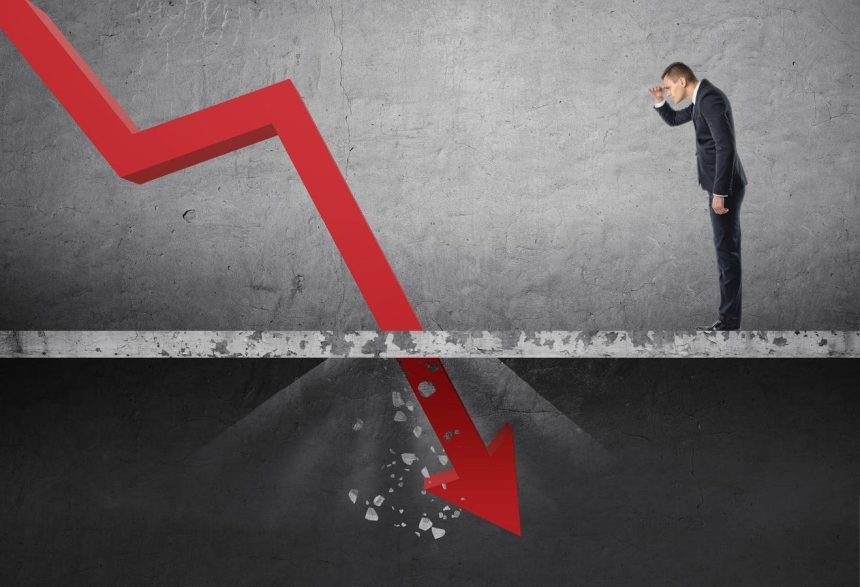Thirty-six years ago, something so unlikely happened that it was basically impossible: The Dow Jones Industrial Average plunged nearly 23 percent in a single day.
Before Monday, October 19, 1987 (now known as Black Monday), such a massive drop in the market wasn’t considered possible because statistics put such a decline at an impossibly rare twenty-two standard deviation event. How rare is a twenty-two standard deviation event? Writing about the drop in his 2000 book When Genius Failed, reporter Roger Lowenstein of the Wall Street Journal noted, “Economists later figured that, on the basis of the market’s historical volatility, had the market been open every day since the creation of the Universe, the odds would still have been against it falling that much in a single day. In fact, had the life of the Universe been repeated one billion times, such a crash would still have been theoretically ‘unlikely.’”
Yet it happened.
Portfolio Insurance and the Perils of Feedback Loops
What caused the drop? A number of factors contributed to the crash:
- Economic growth slowed in the first three quarters of 1987 and inflation was rising. Given the recent stagflation experience from the 1970s, investors were jittery.
- The stock market had declined nearly 10% the week prior to Black Monday which added to investors’ fears.
- Program trading using computers was relatively new and not sophisticated. The losses in the week prior to Black Monday and the losses at the open triggered computer program trading with little or no human intervention.
And then there’s the ill-fated “portfolio insurance” strategy. Portfolio insurance involved using puts and calls to hedge a portfolio against losses while allowing it enjoy gains. Maintaining portfolio insurance required portfolio managers to adust the hedges as the market went up and down. The use of portfolio insurance gained in popularity in the years leading up to Black Monday and by October 1987, tens of billions of dollars were managed within the portfolio insurance scheme.
For each individual investor, using portfolio insurance to hedge against losses was completely rational — benefitting from gains while limiting losses sounds great. But on a system-wide basis, having that much capital deployed using an indentical strategy was catastrophic.
As market volatility spiked in the weeks leading up to Black Monday, the portfolio insurance strategy caused investment managers to sell holdings to raise money to increase their hedges. Losses generated by selling into a declining market triggered the portfolio insurance algorithms to sell even more assets to place more hedges. This feedback loop of losses generated still more selling, creating still more losses, leading to more selling, and so on. The next thing you knew, the market had plunged 23%.
In his book A Demon of Our Own Design: Markets, Hedge Funds, and the Perils of Financial Innovation, Richard Bookstaber, who in 1987 was head of risk management at Morgan Stanley
MS
What Black Monday Teaches Us
The primary lesson of Black Monday is that highly improbable events can happen, and that they happen all the time. Things like terrorist attacks, wars, earthquakes, tsunamis, pandemics, infestations of murder hornets, boats stuck in shipping canals, and stock market crashes that come out of the blue occur all the time. Each event may be improbable on its own, but these sorts of unlikely things happen enough that we should expect that they are bound to occur. Knowing that, it would be best if you designed your investment portfolio to accommodate improbable occurrences, which is accomplished by diversifying across types of assets (stocks, bonds, real estate, private equity) and building in a margin of safety by having sufficient cash and low-risk assets.
The second lesson is that the market recovers from extreme events. Over the past 40 years, we’ve experienced many extreme events, major ones being Black Monday, 9/11, the Financial Crisis, and the Pandemic. And yet, the stock market is up over 20x since Black Monday. This means that adopting a long-term perspective is essential to successful investing. Try to ignore short-term ups and downs, even if they are extreme.
The third lesson is that the unpredictable nature of extreme events means that relying on predictions of the future to make investment decisions is not a good strategy. Investment experts didn’t predict Black Monday, the 9/11 attacks, or the pandemic. Instead of relying on what we now know to be fanciful predictions of stock market movements and returns, you will be better served if you:
- Embrace the uncertainty inherent in the markets; prepare for gigantic swings that could (and will) be just around the corner.
- Stress test your portfolios by modeling what would happen if we experienced another 1929 crash, another Black Monday, a 2000 dot-com bust, or a 2008– 2009 financial crisis (or an even bigger event). Will your portfolio still meet your cash flow needs?
- Stress test yourself. Can you emotionally handle that much volatility?
- Maintain an adequate margin of safety to ride out extreme downside events.
- Avoid excessive debt.
After designing your portfolio to weather wild storms, sail on. Moving in and out of investments may result in missing the best days in the market, thereby devastating portfolio returns.
Read the full article here


